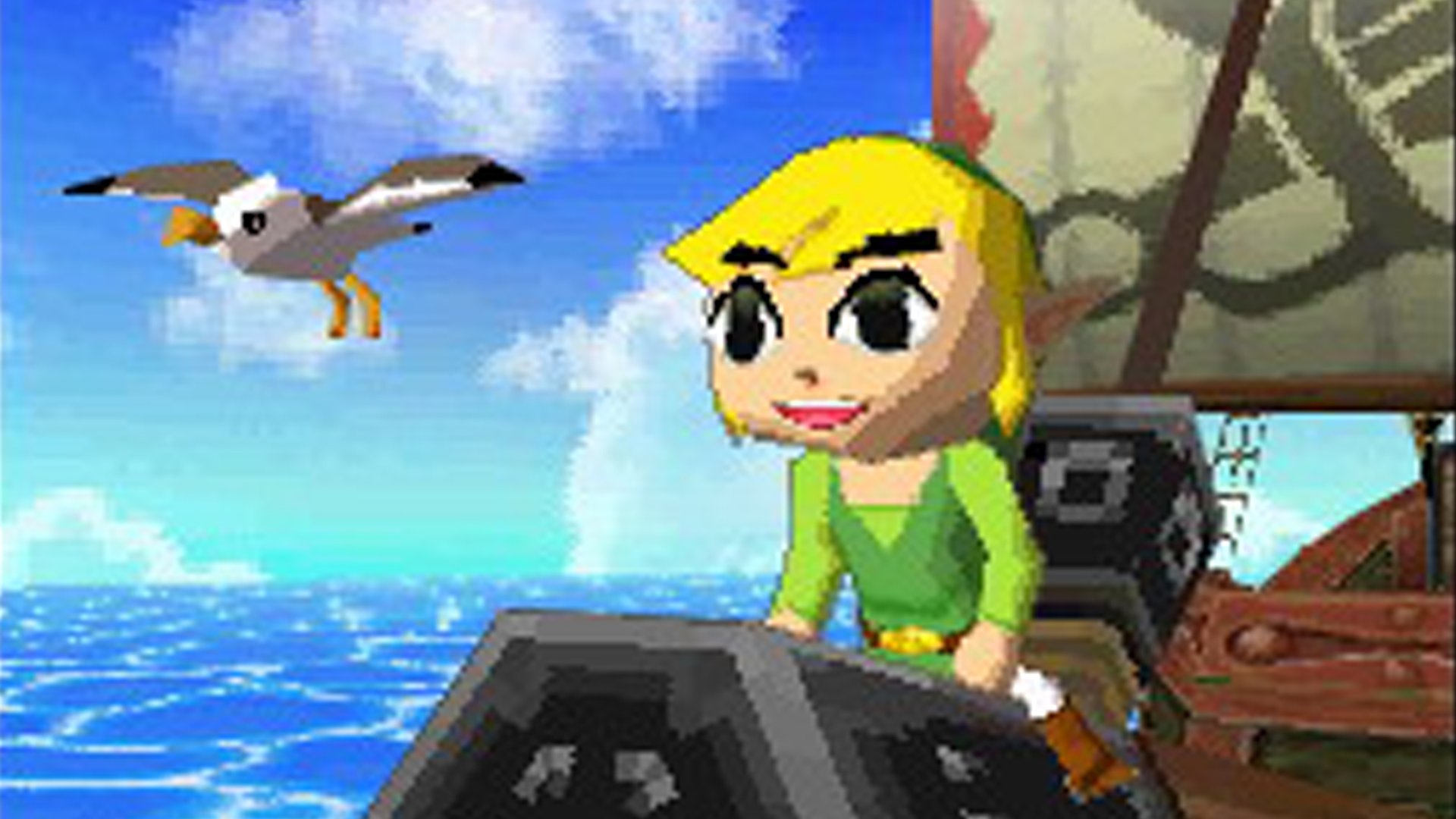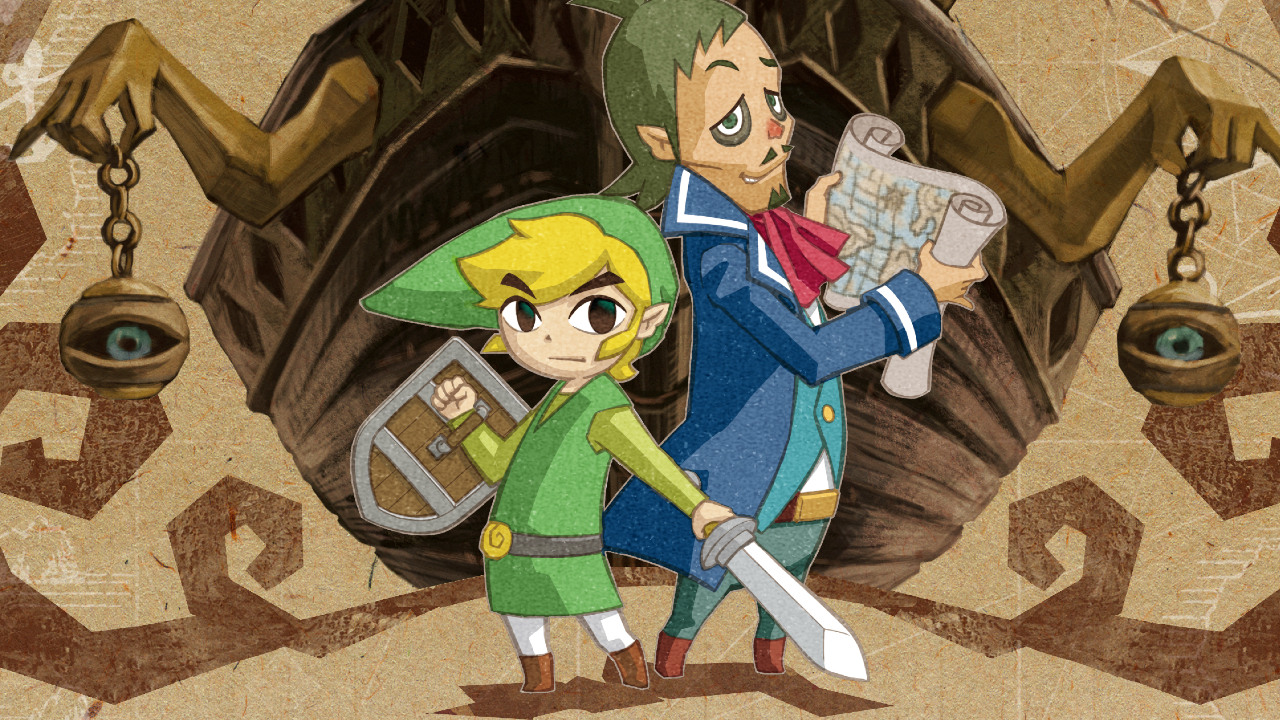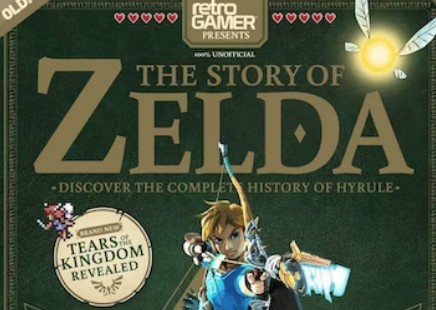The Legend of Zelda: Phantom Hourglass is one of the most unique games of them all
The direct sequel to The Wind Waker dared to be different on the DS in 2007

If you were to ever hear a criticism directed at The Legend Of Zelda series, it's likely an argument that they are 'all the same'. There's always a Link, there's always a Princess Zelda, and there are always puzzles, sword-swinging and nonsense involving the Triforce. But you only need to look at Majora's Mask, The Wind Waker and its sequel Phantom Hourglass to know that's a load of old crap. Wind Waker, in particular, ditches the art style of the N64 games, most of Hyrule's landmass and even poor old Epona.
Phantom Hourglass boldly continues this trend while adding new flourishes, making it one of the most innovative titles in the series. The most immediate reinvention is of the traditional control scheme that had served Link so well for many years. Whether this was an attempt to make Zelda more accessible, or an effort to justify Nintendo's new-fangled touch-screened console, the Nintendo DS, then it's a triumph on both counts. But this fancy new control method has an invigorating effect on the game design, too.
Thumbs up


Freed from those restrictive button shackles, Link can express himself in new ways. He can chuck boomerangs around corners, make annotations on his trusty map, and best of all, plot a course for his new paddle steamer on a series of delightful sea charts. That last part makes you feel more like a hardy sea captain than a cutlass and peg leg ever could, and it requires a great deal less hacksaw-based surgery. Phantom Hourglass is still one of the most satisfying sailing games you can shake a spyglass at, though depressingly, it's not an overcrowded genre. Link's new vessel, the SS Linebeck, may be slightly less intimate than his tiny sailboat in Wind Waker, but that is easy to forgive when you consider that you can manoeuvre it across the Great Sea with greater ease. However, the best feature of the little paddle-steamer-that-could is its nifty salvage arm, which lets you plunder loot from the submerged ruins of Old Hyrule.
The innovation does not end with new controls. The game's centrepiece is the Temple Of The Ocean King: a grand multilayered dungeon you revisit throughout your adventure. Well, perhaps 'replay' is a better word, as you're charged with repeating the same sections over and over. Zelda fans are divided into those who hate the time limit and repetition of the ocean temple and those who don't mind it, but we can probably all agree that it was a novel piece of dungeon design. Link's forays inside are limited by the amount of sand in the titular Phantom Hourglass, and each time he pops out into the wide-open world to fetch more, the temple would reset. Whatever you thought of it, the recurring dungeon offered a unique challenge that hasn't been seen in the series before or since.
Not that Nintendo's own challenges were any less daunting. Until this point, most of the handheld Zelda games had been fun-but-simple throwbacks to A Link To The Past, often outsourced to the likes of Flagship/ Capcom that were understandably more wary of making sweeping changes to the classic formula. In fact, development of Phantom Hourglass started in 2004 as a Four Swords-style affair until that plan was scrapped by 2006 for the game's E3 unveiling. The fertile grounds of creativity the Nintendo DS offered the team inspired Nintendo to fling the tried-and-tested formula into the ocean and try something different. Wind Waker director Eiji Aonuma was affected by his game's sales not reaching the goals that Nintendo expected. However, he expressed a desire to create a game which utilised Wind Waker's setting and unique aesthetic, giving birth to the idea that Phantom Hourglass should pick up where Link's first seafaring adventure ended. Aonuma chose to not direct this entry, though, instead handing the reins to long-time Nintendo programmer Daiki Iwamoto, who stepped up to the director's chair for the first time.
Following Ganon's defeat and Hyrule's sealing under the sea, Link and Tetra (the reincarnation of Princess Zelda) travel the ocean until they are separated on a ghost ship. Link then sets himself on an adventure to locate the strange spooky vessel and reunite with Tetra. The story is disappointingly barebones, and almost pulls an 'it was all a dream!' throwback to Link's Awakening. It's a serviceable tale, however, and works as a smaller-scale adventure that continues the Wind Waker iteration of Link's story. Phantom Hourglass was acclaimed on its release, with many celebrating how the Zelda rulebook changed thanks to the DS's innovative features. Some criticised the return of 'toon Link' after the more serious trappings of Twilight Princess, as well as that infuriating Temple Of The Ocean King. That didn't dissuade over 4 million fans from enjoying Link's seafaring adventure. While not essential, Phantom Hourglass proved that Zelda games could break their established templates and try something new. It's well worth trying for yourself if you can locate a Nintendo DS and a second-hand copy.
Keep up to speed with all of our celebratory Zelda coverage with our The Legend of Zelda celebration hub
Sign up to the GamesRadar+ Newsletter
Weekly digests, tales from the communities you love, and more



